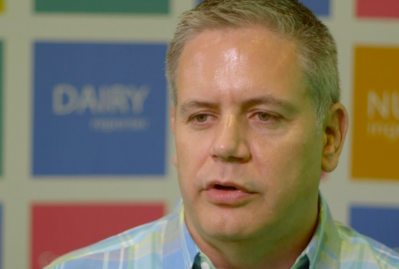Probiota Americas
Biomakers of resilience could elucidate structure function claims for probiotics, experts say

The event, held last Thursday and Friday in San Diego, was hosted by NutraIngredients-USA and is the first event on the North American continent to bring together experts from across the probiotics landscape, from university researchers to regulatory experts to product formulators and marketers. Two main strains came out of the meeting, both of which revolve around the central idea of clarity: More clarity is needed on regulatory aspects of the ingredients and a clearer way is called for to communicate the benefits of probiotics to consumers.
Of health and disease
On the second front, an issue that has loomed over the sector for years has been the question of what constitutes having a healthy gut. At the moment, no good definition exists (it’s a big part of what clouds the regulatory picture, too). Health authorities stress the importance of adequate fiber intake (the 2010 edition of the USDA’s Dietary Guidelines for Americans mentions the word “fiber” 95 times, for example), but that’s about as far as the official word goes. There is no mention of what this fiber intake is supposed to achieve, other than more regularized elimination.
What’s needed, said Dr Susan Mitmesser PhD, director of nutrition research at supplement manufacturing giant NBTY, is a better way to talk to consumers about what probiotics are and what they are meant to do. Consumers are obviously aware that they have some functions in the gut, but the hazy messaging leads to an indifferent commitment on their part. Do I take this stuff all the time, or only when my digestion is upset? If I am supposed to take probiotics on an ongoing basis, what are they supposed to do for me?
“Probiotics are currently the second fastest growing supplements category behind only adult multivitamins,” Mitmesser told the gathering. “But we do know there is a high rate of lapse of usage among consumers who use probiotics.”
An example of that hazy messaging can be found in a recent spate of TV ads for a major probiotic brand. “XXXX works in the gut, where 70% of your immune system lives!” gushes the sporty presenter. The viewer is left to make the connection that the probiotic must be supporting this immune system function in some way, though the mechanism is left unspecified.
Being able to more concisely tell consumers what effects they are likely to experience continues to be a challenge, Mitmesser said. The solution lies in finding a middle ground between disease and a completely asymptomatic state where probiotics can move the needle in a positive direction and finding a way to measure this state to underpin those messages, she said.
“We need to get to a place where we can start to identify biomarkers of suboptimal health that would elucidate structure function claims without claiming to treat a disease,” Mitmesser said.
Toward biomarkers of resilience
Suzan Wopereis, PhD, of the Dutch research consortium TNO, said a new research approach offers a path toward achieving Mitmesser’s goal. TNO has already done a significant amount of foundational work in the sector through the development of its TIM-1 and TIM-2 in vitro gut function models. The approach is underlaid with a new look at what constitutes health, she said.
“We believe health should be defined as the ability to adapt and self manage in the face of social, physical and emotional challenges. In other words, the person who is more healthy is better able to deal with these day-to-day stressors,” Wopereis said.
That paradigm of health then informs a research strategy, Wopereis said. The approach looks at moving subjects out of their health comfort zone though intense physical training, for example, and measuring results in this artificially overheated time frame.
“Up to now we have had a system of looking at what we call the late biomarkers of disease. It’s a model that came out of the pharma world. We think by using a series of challenge tests we can show systems biology-based early biomarkers of disease,” she said.
“We need more resilience markers of health rather than biomarkers of disease. We want to show that we have a nice toolbox so that we can measure the effects of a dietary intervention,” she said.
Label confusion
Speakers at the event also agreed that the labeling of probiotics could use an overhaul. The blizzard of genus and species names that festoons labels at the moment conveys little information of value to consumers. And the highly variable claims about the amount of probiotic organisms in a bottle or functional food serve mostly to confuse customers, said Monica Feldman, head of industry research for market research firm Euromonitor.
“In North America they are more aware of CFU count, but that doesn’t mean they can tell the difference between a 5 billion CFU product and a 10 billion CFU product,” she said.
“Do probiotic labels mean anything to consumers? How do we modify labels to communicate better with them?” NBTY’s Mitmesser asked.
“I believe we need to have identification to the strain level. We need to have to have the same composition of strains in the formulation that was used in the research we are citing. How do we get there? I suggest a framework in which we all become a little bit more transparent and collaborative—researchers, regulators and brand holders,” she said.
For more information on Probiota Americas, click here.












